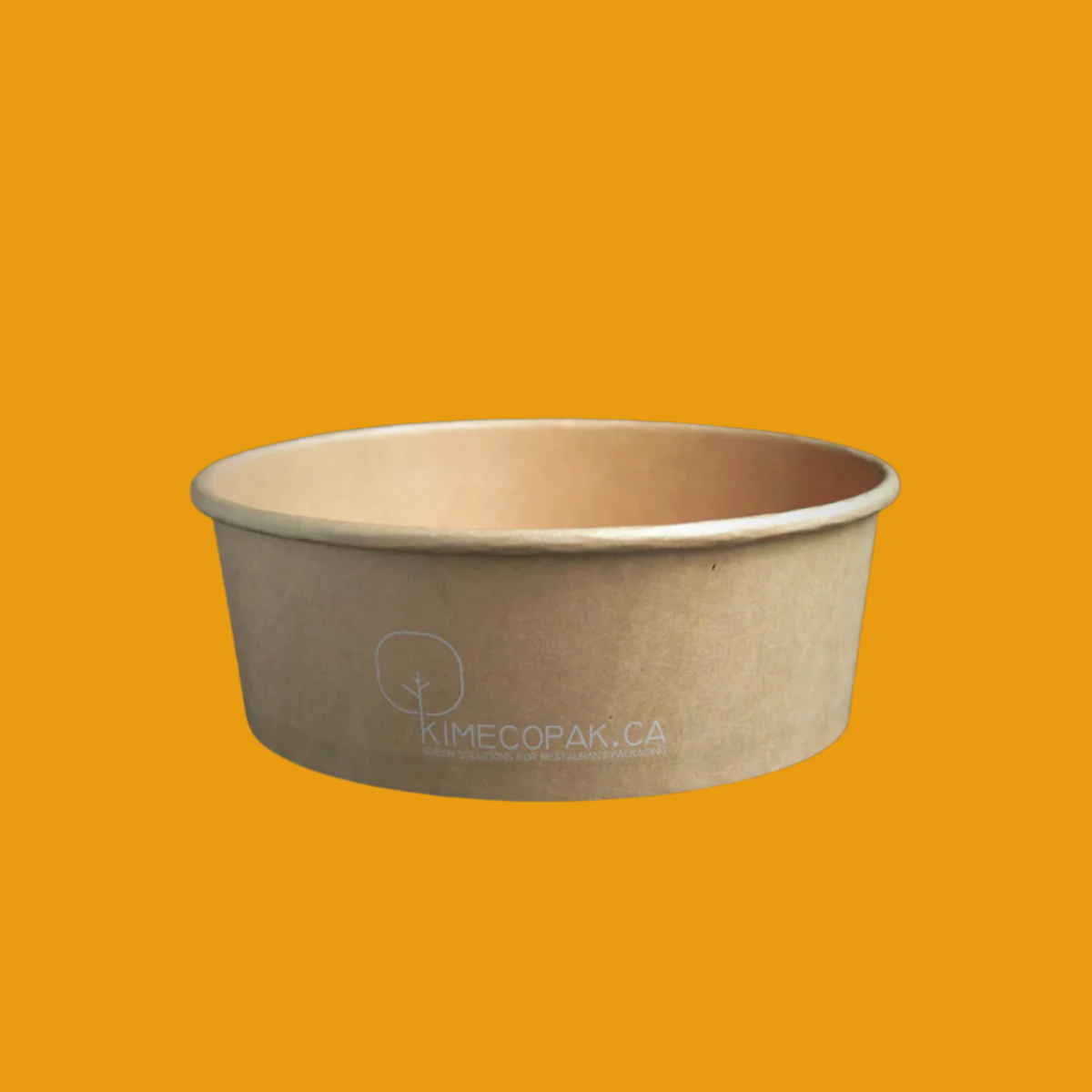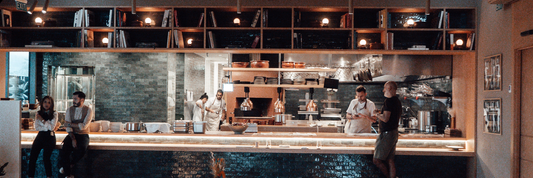The food industry is evolving rapidly, and at the center of this transformation is the rise of the ghost kitchen. A ghost kitchen, sometimes called a virtual kitchen or cloud kitchen, is a professional food preparation and cooking facility set up for the purpose of fulfilling online orders only. Without a traditional dine-in space, ghost kitchens allow businesses to lower operating costs, streamline delivery services, and quickly adapt to changing consumer demands.
As online food delivery continues to surge in popularity, ghost kitchens have become an essential strategy for both established restaurant brands and startups looking to grow in a highly competitive market. In this article, we'll explore what a ghost kitchen is, how it works, and why it represents the future of foodservice innovation.
-
How to Start a Ghost Kitchen and Succeed in the Food Delivery Boom
-
Cloud Kitchen vs Ghost Kitchen: An Overview
Introduction to Ghost Kitchens, Cloud Kitchens, and Virtual Restaurants

What is a ghost kitchen?
A ghost kitchen, also known as a cloud kitchen or virtual restaurant, operates as a commercial kitchen without a dine-in space for customers. This type of establishment primarily focuses on fulfilling online orders for food delivery. The concept allows restaurants to streamline operations and cater directly to the growing demand for takeaway and delivery options.
The rise of cloud kitchens and virtual restaurants
The phenomenon of cloud kitchens has gained momentum in recent years, particularly due to the pandemic, which shifted many consumers towards online food ordering. Virtual restaurants capitalize on this trend by minimizing operating costs and allowing culinary entrepreneurs to test new menu items with less risk. This surge in demand highlights the evolving landscape of the food service industry and indicates a significant shift towards convenience and efficiency.
Differences between ghost kitchens, cloud kitchens, and dark kitchens
While terms like ghost kitchens, cloud kitchens, and dark kitchens are often used interchangeably, there are subtle distinctions:
- Ghost Kitchens: Primarily focused on delivery and takeout with no dine-in facility.
- Cloud Kitchens: A broader term that encompasses various kitchen types including ghost kitchens; these often house multiple brands under one roof.
- Dark Kitchens: Similar to ghost kitchens but can also imply a lack of branding or marketing presence.
Understanding these differences can help aspiring restaurateurs navigate the growing landscape of virtual dining options.
Why Are Ghost Kitchens Booming?

Impact of food delivery apps on cloud kitchens and ghost kitchens
The emergence of food delivery apps has been a game-changer for ghost kitchens. Apps like Uber Eats, DoorDash, and Grubhub have expanded their reach, enabling customers to order meals from their favorite restaurants with just a few clicks. This trend has provided ghost kitchens the platform to thrive, as they often partner directly with these apps to deliver fresh meals efficiently.
Changing consumer behavior favoring virtual restaurants
Consumer behavior is shifting toward convenience-driven choices. A busy lifestyle prompts people to seek quick, hassle-free meal solutions. As a result, ghost kitchens meet this demand by offering diverse menu options in one location, allowing customers to order from multiple brands in a single delivery. This adaptability not only caters to customer preferences but also enhances the overall dining experience.
Lower startup and operational costs for dark kitchens
Starting a traditional restaurant comes with significant financial burdens that can deter many entrepreneurs. Conversely, ghost kitchens typically require lower startup costs as they do not need front-of-house staff or elaborate dining spaces. This economic advantage provides a unique opportunity for multiple businesses to flourish within a single kitchen, thus reducing overhead and increasing profitability.
How Ghost Kitchens Work: Inside the Business Model

Overview of ghost kitchen operations
Ghost kitchens operate efficiently by utilizing their space and resources optimally. They utilize various delivery platforms to reach customers and often manage multiple brands simultaneously. This setup enables them to cater to a wide audience without the need for physical storefronts that present higher costs and risks.
Types of business models: single brand, multi-brand, shared kitchen
Ghost kitchens can adopt different business models:
- Single Brand: Focused on a specific cuisine or concept, providing a streamlined menu to ensure quality.
- Multi-Brand: Several brands operate under one roof, broadening customer choices and maximizing kitchen efficiency.
- Shared Kitchen: Multiple tenants share a single kitchen space and resources, allowing for reduced costs and collaborative marketing efforts.
Choosing the right model depends on the target market and operational capabilities of the kitchen.
Role of technology and logistics in cloud kitchens
Technology plays a vital role in the success of ghost kitchens. Advanced order management systems streamline operations, optimize delivery routes, and enhance customer interaction. Moreover, logistics partners help manage supply chains efficiently, ensuring fresh and timely deliveries. This integration of technology not only simplifies kitchen operations but also enhances overall efficiency, leading to satisfied customers and repeat business.
With the rise of ghost kitchens, consumers can look forward to a transformative dining experience characterized by convenience, variety, and quality. Those interested in this booming sector must stay informed and agile to adapt to changing trends and consumer preferences.
Ghost Kitchen Benefits for Startups

The rise of ghost kitchens has transformed the food industry, particularly for startups.
Lower Setup Costs and Reduced Overhead
One of the primary ghost kitchen benefits is the significantly lower setup costs. Traditional restaurants require hefty investments in physical space, decor, furniture, and equipment. In, ghost kitchens focus solely on kitchen space, eliminating costs associated with serving customers on-site. This allows startups to allocate more funds towards important areas such as food quality and marketing.
Flexibility to Test Multiple Food Concepts via Virtual Restaurants
Ghost kitchens offer remarkable flexibility. Entrepreneurs can easily experiment with different food concepts and adapt their offerings based on customer feedback. Since they operate virtually, businesses can run multiple brands from a single kitchen, decreasing risks and maximizing the potential for finding a successful niche.
Quick Scaling and Expansion Without Traditional Risks
The enduring need for home delivery options has made ghost kitchens an attractive avenue for rapid growth. Startups can test various markets without the usual overhead and risk involved with traditional restaurant expansions. With the ability to set up additional kitchen spaces as needed, businesses can scale efficiently and respond swiftly to market demands.
How to Start a Ghost Kitchen: Step-by-Step Guide
Starting a ghost kitchen requires careful planning and execution. Here’s a step-by-step guide on how to navigate this entrepreneurial journey.
Step 1: Conduct Market Research
Evaluating the demand for cloud kitchens in your target market is crucial. Understand your potential customers, their preferences, and any gaps in the market. Surveys and competitor analysis can provide insights that help shape your offerings.
Step 2: Choose a Strategic Location
Selecting the right location is vital even for ghost kitchens. Look for dark kitchen hubs—areas where multiple kitchens operate within the same facility. This shared space can lower costs and enhance delivery efficiency.
Step 3: Set Up Kitchen Infrastructure and Staffing
Invest in the necessary kitchen appliances and technology to ensure efficient operations. Staffing needs might differ from traditional restaurants; consider hiring skilled chefs who can work in a fast-paced environment with the focus on preparation and quality control.
Step 4: Partner with Delivery Apps for Ghost Kitchen Exposure
Collaboration with popular food delivery services can significantly improve your visibility. Partnering with well-established platforms ensures that your virtual restaurant reaches a larger audience and makes ordering seamless for customers.
Step 5: Market Your Virtual Restaurant Effectively
Use social media and online marketing strategies to promote your ghost kitchen. Digital campaigns can showcase your unique culinary offerings and attract a loyal customer base. Engage with customers through promotions, reviews, and content to build a strong online presence.
Best Practices for Running a Successful Ghost Kitchen
Maintaining the quality and efficiency of a ghost kitchen involves adhering to certain best practices.
Menu Design Optimized for Delivery
Crafting a menu that travels well is essential. Select dishes that maintain their quality during delivery and consider focusing on items that resonate with customers while being cost-effective.
Maintaining Food Quality in Dark Kitchens
Quality control should be a top priority. Implement strict food safety practices and training to ensure that each dish meets high standards before reaching the customer. Regular taste tests and feedback loops can also facilitate continual improvement.
Building Brand Trust for Virtual Restaurants
Building customer trust in a virtual space can be challenging. Consistent quality, reliable delivery, and exceptional customer service will encourage repeat business. Transparent communication, such as informing customers about sourcing and ingredients, can enhance brand loyalty.
Cost Control Strategies for Cloud Kitchens
Monitoring and managing costs efficiently is key to profitability. Utilize inventory management software to track supplies, reduce waste, and optimize purchasing decisions. Implementing energy-efficient practices can also decrease overhead costs.
The Future of Ghost Kitchens

The trajectory of ghost kitchens is promising, with several trends shaping the landscape.
Rise of Fully Automated Dark Kitchens
As technology advances, the future may see the rise of fully automated kitchens. Automation can streamline operations and reduce labor costs, leading to greater efficiency without compromising food quality.
Growth of Virtual Restaurant Brands
The growth of virtual restaurant brands is likely to continue as consumers increasingly prefer convenience. This will create a competitive environment, providing diverse choices for customers while pushing startups to innovate.
Sustainability and Green Innovations in Cloud Kitchens
Sustainable practices are becoming a focal point in the food industry. Ghost kitchens can adopt green innovations, from eco-friendly packaging to energy-efficient appliances, reflecting customers' growing consciousness about environmental impact.
Conclusion
Ghost kitchens are reshaping how the food industry operates, providing startups with a flexible and cost-effective path to success. With lower setup costs, innovative opportunities to test food concepts, and the ability to scale quickly, startups can thrive in this evolving market. As ghost kitchens, cloud kitchens, and virtual restaurants continue to grow, they represent the forefront of restaurant innovation a future filled with potential for aspiring entrepreneurs.









